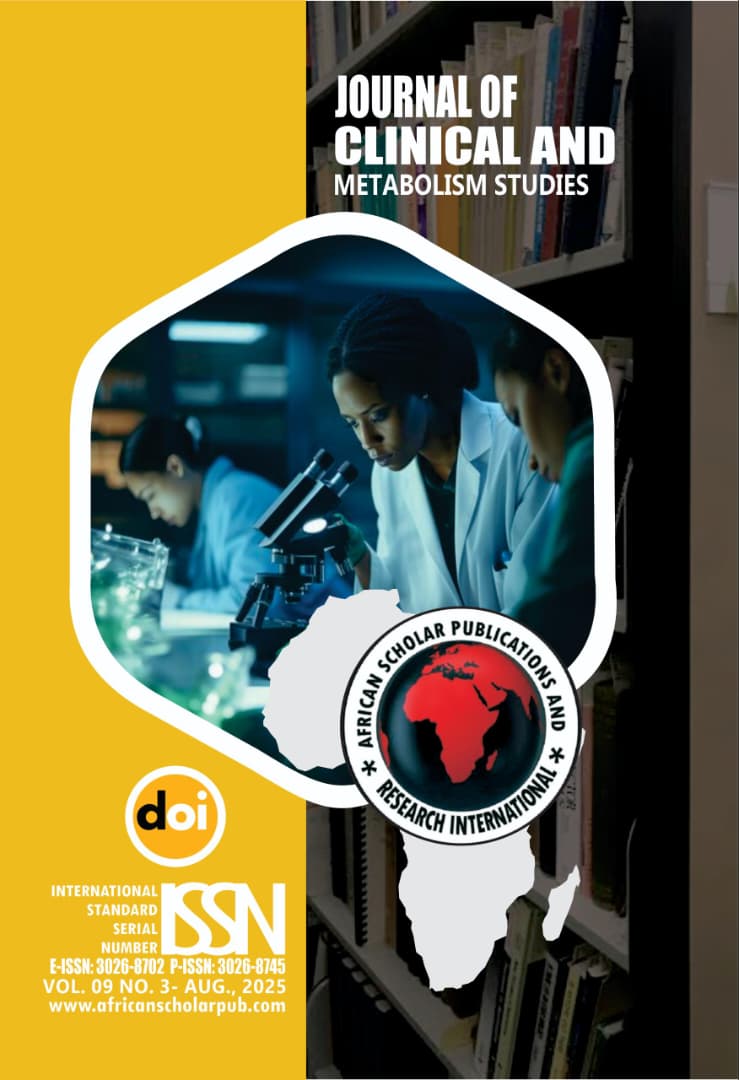Geographic Variation in Nutritional Composition of Northern Nigerian Sweet Potato Varieties: Proximate, Vitamin (A, B₂), and Antinutrient Differences Among Zaria, Kano, and Minna Cultivars
Abstract
The effects of some processing methods and environmental differences on the levels of nutrients and ant-nutrients in Ipomoea batatas were evaluated. From the findings, Fresh samples of Ipomoea batatas were obtained from Kano in Kano State, Minna in Niger State and Zaria in Kaduna state all in Nigeria. The samples were thoroughly washed separated with clean water, grated and divided into four portions for different processing; shade-drying, sun-drying, oven drying and 48-hour fermentation followed by shade-drying. The proximate, elemental and vitamin analysis were determined following the approved methods of AOAC. With the exception of the fermented sample which had significantly (p<0.05) lower crude protein in comparison to the shed-dried, there were no significant (P>0.05) changes in the proximate composition of Ipomoea batatas processed differently. Processing method did not significantly (p>0.05) affect the oxalate, tannins, nitrate, phytate and cyanide contents of Ipomoea batatas. However, oven-dried and fermented samples had significantly (p<0.05) lower trypsin contents when compared with shed-dried and sun-dried samples. The sun-dried sample of Ipomoea batatas had significantly (p<0.05) lower concentrations of Vitamin E compared to other samples. Levels of Vitamins A, B2, D, C and the studied minerals didn’t significantly vary (p>0.05). Zaria specie had significantly (p<0.05) higher moisture, ash, lipid and Vitamin B2 compared with the Kano and Minna species. There were no significant (p>0.05) differences in other proximate compositions between the Kano and Minna species of Ipomoea batatas. Kano specie had significantly (p<0.05) lower level of oxalate but higher trypsin compared with the other two species. On the other hand, tannins were significantly (p<0.05) lower in the Minna specie. Vitamins B6, D, C and E were not affected significantly (p>0.05) among the Zaria, Kano and Minna species. The levels of the studied minerals (Fe, Cu, Zn, Na, Mg, Ca, Ni, Co, and Pb) did not differ significantly (p>0.05) among the species. Shade-drying and oven-drying may be better in preserving the nutrients of Ipomoea batatas than sun-drying and fermentation, and Zaria specie may be a better source of macronutrients and vitamins particularly of A and B12.
Keywords:
Sweet potato, Sun dried, Shed dried, Potato varieties, Cultivars, NutritionalDownloads
Downloads
ACCESSES
Published
Issue
Section
License
Copyright (c) 2025 A. A. Muhammad, A. S. Idoko, M. M. Ibn-Shuaib, B. M. Maibalangu, A. A. Audu (Author)

This work is licensed under a Creative Commons Attribution 4.0 International License.















